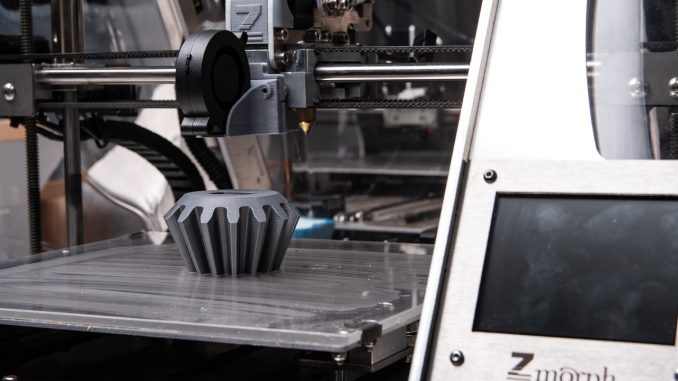
3D printers have long been huge behemoths adapted only for industry, but now they have shrunk and also work for home use.
Today, there are models both for real enthusiasts with extensive computer experience to amateurs. Regardless of what level you are at when it comes to how 3D printers work and what prior knowledge of computers, technology and 3D equipment you possess, there is a 3D printer to suit all different needs.
We will go through the basic concepts of 3D printers and help you understand your needs and possibilities a little better. 3D printers were something that felt very distant to ordinary households, and the technology has long struggled with the same problem as the first generations of computers: they were simply too big.
But as technology has been refined, the machines have been refined, and the devices on the market for home use today are easy to handle and can be moved by a human without problems.
Unfortunately, the machines still make quite some noise so there are advantages to having your printer somewhat separated if possible. It should also be pointed out that the printers sold for home use are less fine-tuned than the high-tech equipment used to print dentures or spare parts for space rockets. However, printers intended for private use today are generally of good quality and can handle the type of printing that private users usually use without problems.
How 3D printers work in practice
In a very simplified way, you can say that a 3D printer creates an object by placing thin layers of material on top of each other, and in this way a three-dimensional shape is built up. The printout is based on a digital drawing or shape that also sets the dimensions in all directions, often created in a CAD program.
The drawing is then transformed into STL (standard tessellation language), after which instructions for printing are sent to the 3D printer. Often you can see with the naked eye how the machine puts one layer on top of another and the object takes shape before the eyes of the user. The materials can vary and modern printers can often handle both plastic, metal and glass as well as certain edible materials such as chocolate or biscuits of various kinds.
Thanks to 3D printing technology, additive manufacturing solutions have increased in use.
Depending on how advanced your 3D printer is, it may only be able to handle one or two different materials, while industrial 3D printers can even mix materials within the same object.
The 3D printing takes place on a platform that can be raised and lowered during the printing process. Depending on how large the object you want to print, and how fine the layers in the object should be, the printing process can take anything from a few hours to several days.
The materials in a 3D printer are sometimes called filaments, which describe a very fine fiber structure that is joined together to form a three-dimensional object. Cheap filaments for your 3D printer can be purchased at various online stores or in connection with the purchase of the 3D printer.
Different techniques used
3D printers from different brands use different types of technology to carry out 3D printing. The differences often lie in how the different layers that are formed are joined together to create a three-dimensional object.
FDM technology 3D printer
A commonly used technique for private individuals is FDM (Fused deposition modeling), which is based on layer after layer of molten plastic being sprayed out through one or more nozzles and placed layer upon layer on the object which is slowly built up. The platform that the item is on is constantly being lowered to make room for new layers to be placed on.
The plastic solidifies almost immediately when it comes out of the nozzle and the layers are automatically attached to each other through the filaments or fibers of the material. Common materials in FDM technology are the plastic ABS, which is reminiscent of Lego or biodegradable plastic like PLA, but this technology can also work with chocolate, for example.
Powder-based techniques
Another type of technology is so-called powder-based techniques or pbf additive manufacturing which is actually a collective name for several different ways of printing based on the same principle. Powder is the base for the print and is used as a building material to shape the object. The powder can consist of powdered plastic, metal, or, for example, glass.
The powder is poured onto the construction platform and the small particles adhere to each other with the help of a binding liquid or a laser beam. In variants with a laser beam, particles are melted and then fuses together to form a solid layer.
This technique makes it possible to create a greater variety of shapes and objects compared to other printing techniques because the powder particles that are not fused or joined together work as a support during the construction process and can then be easily brushed off or reused in a new print.
Examples of powder-based techniques are SLS (selective laser sintering) and DMLS (direct metal laser sintering), as well as EBM (electron beam melding), which uses a laser beam in a vacuum under very high heat to fuse powdered titanium into a massive object.
Still, other models have liquid-based technologies such as SLA (stereolithography) and DLP (digital light processing). These techniques use a liquid building material in a container which solidifies when exposed to different types of light. This technology also supports both plastic variants such as ABS and PLA filament.

Leave a Reply